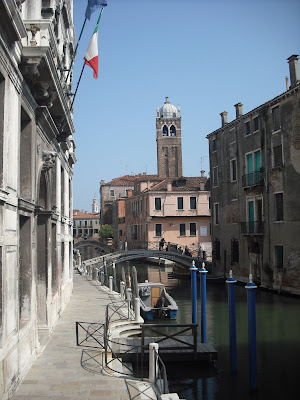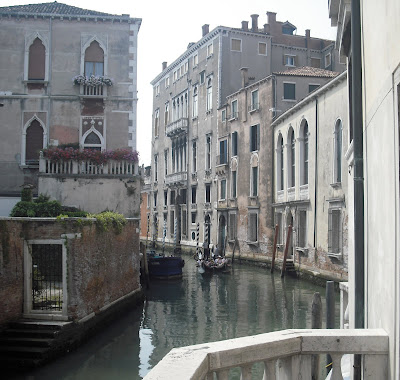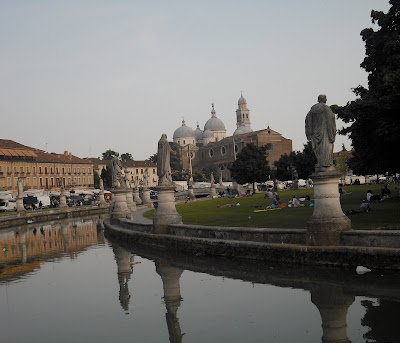

I thought I wouldn't include any more photos of Graz, but I snapped these of the courtyard across from the Sankt Leonhardkirche, our charming Baroque church just down the street. These buildings are probably mid-nineteenth century. With the roses and old trees it looks like a corner that has been forgotten by time.
A few nights ago we had our grand Gala to celebrate the fortieth anniversary of AIMS in Graz. Instead of holding the opening concert in the Aula of Karl-Franzens-Universität, the festivities took place in the lovely Stephaniensaal downtown (and a big plus was that the S-saal was air-conditioned -- sort of). The program opened with Rimsky-Korsakov's "Russian Easter Overture". It was followed by a few arias sung by alumni of the program who were brought in for the occasion. The first half ended with the "Fledermaus" Overture. The second half continued with various arias and ensembles from the same operetta and ended with the finale thereof. It was all very nicely done.
Meanwhile, the heat wave continues. Today it is supposed to be 35 C (in the upper nineties), with ever rising humidity. Getting on the non-AC tram is like taking a ride in an oven on wheels. Now we know what a Thanksgiving turkey feels like. Storms are promised for this evening and a cool-down. I have yet to hear an Austrian complain about the heat. They just put up with it as a fact of life. I thought of escaping for the weekend to the mountains and looked into the possibilities, but I thought of it too late to make the necessary arrangements. The Salzkammergut, the area of lakes and mountains outside of Salzburg, is just two hours by train. The Styrian Alps are less than an hour north of here. Maybe next weekend...




































